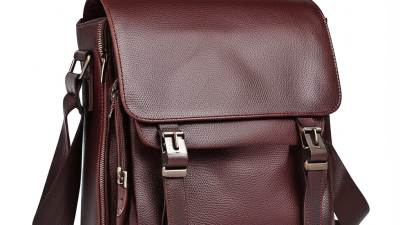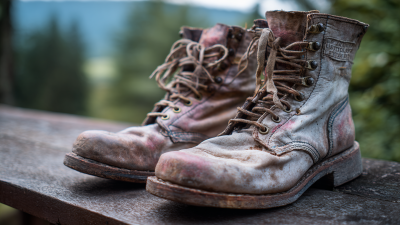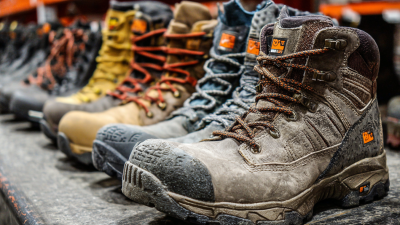The Ultimate Guide to Choosing the Right Ski Clothing for Every Winter Adventure
When gearing up for winter adventures, the right Ski Clothing plays a crucial role in ensuring comfort, performance, and safety on the slopes. With a plethora of options available, navigating the world of ski apparel can be overwhelming for both beginners and seasoned enthusiasts. In this guide, we'll break down the essential elements of choosing the ideal ski attire that suits your specific needs and activities, whether you're hitting a leisurely green run or tackling challenging black diamonds. From understanding different materials and layers to selecting the right fits and accessories, this comprehensive exploration will empower you to make informed decisions, enhancing both your skiing experience and overall enjoyment of winter sports. Join us as we delve into the key considerations and tips that will help you find the perfect ski clothing for every exciting winter adventure.

Top 5 Essential Materials for Optimal Ski Performance and Comfort in Cold Weather
When preparing for a winter adventure on the slopes, choosing the right ski clothing can significantly enhance your performance and comfort. The essential materials that make up your ski gear play a crucial role in optimizing your experience. Here are the top five materials that every skier should consider.
 First and foremost, moisture-wicking fabrics are indispensable. They help to draw sweat away from your body, keeping you dry and comfortable throughout your day on the mountain. Look for base layers made of merino wool or synthetic fibers, which effectively manage perspiration.
Tip: Always pack an extra layer just in case the weather turns unexpectedly cold.
First and foremost, moisture-wicking fabrics are indispensable. They help to draw sweat away from your body, keeping you dry and comfortable throughout your day on the mountain. Look for base layers made of merino wool or synthetic fibers, which effectively manage perspiration.
Tip: Always pack an extra layer just in case the weather turns unexpectedly cold.
Next, insulation materials like down or synthetic fills keep you warm without adding bulk. Down is lightweight and offers excellent warmth, but be mindful that it loses its insulating properties when wet. Synthetic insulation, on the other hand, remains effective even when damp.
Tip: For maximum warmth, choose a mid-layer that combines both materials.
Finally, consider the outer fabric of your ski gear. Waterproof and breathable materials, such as Gore-Tex, are essential for keeping moisture out while allowing sweat to escape. This combination protects you from the elements and ensures you stay comfortable throughout your adventure.
Tip: Invest in high-quality outerwear; it can make all the difference in extreme conditions.
7 Key Features to Look for When Choosing Insulated Ski Jackets
When selecting insulated ski jackets for your winter adventures, it’s essential to focus on several key features that enhance both performance and comfort. According to a study by the Outdoor Industry Association, over 70% of skiers prioritize weatherproofing in their outerwear, making it a critical element in any jacket. Look for jackets featuring high-quality waterproof and breathable membranes such as Gore-Tex or similar technologies, which provide a shield against wet conditions while allowing moisture to escape, ensuring you stay dry from both snow and sweat.
Another significant aspect to consider is insulation type. Synthetic insulation materials, like Primaloft, are becoming increasingly popular due to their lightweight and quick-drying properties. According to a report by the Sports & Fitness Industry Association, jackets with these materials can maintain warmth even when wet, which is invaluable during unpredictable weather conditions. Furthermore, features such as adjustable hoods, articulated sleeves, and powder skirts can greatly enhance mobility and protection on the slopes. With these insights, choosing the right insulated ski jacket can truly transform your outdoor experience this winter.
The Ultimate Guide to Choosing the Right Ski Clothing for Every Winter Adventure
| Feature | Description | Importance Level |
|---|---|---|
| Insulation Type | Choose between synthetic or down insulation based on warmth and moisture management needs. | High |
| Waterproofing | Look for jackets with high waterproof ratings (10,000 mm or higher) for wet conditions. | High |
| Breathability | Select jackets that allow moisture to escape to prevent overheating. | Medium |
| Fit and Mobility | Ensure a comfortable fit that allows for easy movement while skiing. | High |
| Pockets and Features | Consider the number and placement of pockets for convenience. | Medium |
| Adjustability | Features like adjustable hoods, cuffs, and waist help customize the fit. | Medium |
| Durability | Choose fabrics that withstand wear and tear from skiing and outdoor activities. | High |
4 Must-Have Accessories for Enhancing Your Skiing Experience
When gearing up for your winter adventures, it’s essential to choose accessories that not only enhance your performance on the slopes but also keep you stylish. Some of the must-have items include heated socks for added warmth, chic beanies to keep your head cozy, and shell suits that combine functionality with fashion. Layering is key, so consider adding cashmere knits or fur-trimmed mittens to elevate your aesthetic while ensuring you stay warm.
**Tips:** Invest in high-quality base layers that wick moisture for comfort during long days on the mountain. Don't overlook the importance of protective gear, such as padded gloves and a reliable helmet, to keep you safe while enjoying the thrill of skiing. Additionally, innovative accessories like helmet speakers can elevate your experience, allowing you to enjoy your favorite tunes while you carve through the snow.
As the ski season evolves, keeping an eye on trends can also be beneficial. Look for accessories that not only provide warmth and safety but also incorporate cutting-edge technology for improved performance. From high-tech gadgets that enhance control to stylish pieces that reflect your personal style, the right accessories can significantly enhance your skiing experience.

6 Considerations for Selecting the Best Ski Base Layers for Cold Conditions
When selecting ski base layers for cold conditions, several crucial factors come into play to ensure both warmth and comfort on the slopes. According to the Outdoor Industry Association, around 34% of outdoor enthusiasts say that layering is the most effective way to stay warm while skiing. This highlights the importance of choosing the right materials and fit for your base layers. Opt for fabrics like merino wool or synthetic blends, which not only provide excellent insulation but also wick moisture away from the skin. A study published in the Journal of Sports Sciences emphasizes that moisture management can significantly affect thermal comfort, allowing skiers to perform better in challenging conditions.
Another important consideration is the fit of your base layers. Tight-fitting garments trap heat close to your body and minimize bulk, promoting movement freedom during dynamic activities such as skiing. The International Journal of Sports Physiology and Performance notes that proper fit can reduce muscle fatigue and improve endurance, which is essential for long days on the slopes. Additionally, keep an eye on features like flat seams and tagless designs that prevent chafing and enhance overall comfort. By focusing on these elements, you can ensure that your skiing experience is both enjoyable and safe, regardless of the harsh weather conditions.
The Ultimate Guide to Choosing the Right Ski Clothing for Every Winter Adventure
This bar chart illustrates the importance of different layers and accessories in ski clothing. Base layers are crucial for moisture management, while mid-layers provide insulation, and outer layers protect against the elements. Accessories such as gloves and hats add essential warmth to your winter adventure.
3 Critical Fit Tips to Ensure Your Ski Clothing Supports Maximum Mobility
Selecting the appropriate fit for ski clothing is crucial for ensuring maximum mobility on the slopes. According to a report by the Outdoor Industry Association, nearly 70% of skiers reported that flexibility and freedom of movement are among their top priorities when choosing winter gear. When ski clothing restricts movement, it not only diminishes performance but also increases the risk of injuries. To prevent this, skiers should look for garments with articulated joints and a tailored fit that allows for dynamic motion, facilitating seamless transitions and turns.
Another key aspect of achieving an optimal fit is considering layering. A study published in the Journal of Sports Sciences highlighted that layering enhances temperature regulation and movement. Skiers should aim for a base layer that fits snugly without constricting blood flow, followed by insulating and outer layers that accommodate movement. As users move through different terrains, the ability to adjust these layers can greatly influence comfort and performance. By focusing on these fit tips, skiers can ensure that their gear supports both mobility and the enjoyment of their winter adventures, significantly enhancing their overall experience on the mountain.
Related Posts
-

Quality Crafted Men's Shoulder Bags: Your Gateway to Global Style from China's Leading Factory
-

China Manufacturing Thrives Amidst US China Tariff Challenges with Best Escape Bags
-

How to Choose the Perfect Combat Boots for Every Adventure
-

Ultimate Checklist for Choosing the Best Mens Sun Hats for Every Occasion
-

10 Essential Tips for Choosing the Best Work Boots for Your Global Workforce
-

What is the Appeal of Men's Waist Bags for Everyday Use
